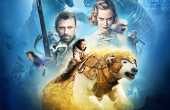Dr Toula
Clinical and Jungian psychologist and author. Interested in ways young adult mythic fantasy fiction can be used as Story Image Therapy.
Junior Contributor II
- Lurker
- ?
- Articles
1 - Featured
1 - Comments
7
- Ext. Comments
5 - Processed
0 - Revisions
0
- Topics
1 - Topics Taken
1 - Notes
1
- Topics Proc.
1 - Topics Rev.
0
- Points
179 - Rank
X - Score
83
Latest Articles
Latest Topics
Myth and ModernismConsider how mythology-based stories that articulate the hero's journey are presented in classical literature. Compare and contrast this with present day literary genres and how older and more modern texts can impact upon a person's everyday life. Some contemporary examples could include: The Lord of the Rings; The Lion, The Witch and the Wardrobe; Harry Potter; and His Dark Materials.
|
Latest Comments
| His Dark Materials: Conflict, Justice and Mental Health | |
True Om. Cake – the movie was not an accurate representation of the complexity of the book trilogy. Thankyou everyone for your comments. | His Dark Materials: Conflict, Justice and Mental Health |
Well written and well researched article. A pleasure to read – particularly the comparison between Beowulf and Aragorn; as well as the dragon Smaug and the dragon in Beowulf. Well done! | The Origins of Middle-Earth: Gods, Poems, and Dragons |
The benefits of rereading, in my opinion, far outweigh the drawbacks. This is particularly in relation to using novels and other reading material for self-study and reflection | Why Reread Books? The Pros and Cons of Rereading |
Like the happenings in Plato’s parable of the cave, in which shadows are the person’s ‘reality’, supernatural forces such as aliens or demons are grounded in a fantasy world that articulates the real world. As such, superhero films will continue to endure as they not only tell us something about the world in which we live, but more importantly, about our own place within it. | Super Heroes films as Genre Films |
Congratulations on a well-written article. The hero’s main feat, whether it be Luke Skywalker, Harry Potter or Frodo Baggins, is to overcome the monster of darkness: the long-hoped-for and expected triumph of the conscious over the unconscious. An unconscious drama seen in projection – with which we can all relate. Luke, Harry and Frodo lead the way. | Mythological Motifs in Mainstream Media |
The hero archetype will always continue. An archetypal motif based on overcoming obstacles and achieving goals, albeit however outlandish, continues to resonate in popular culture. Ultimately, what this means is that whether it is Barry Allen, Batman or any other heroic figure, the main feat: to overcome the monster of darkness, will always continue – regardless of the ‘silliness’ of the show. I for one love the exaggerated archetypes revealed in The Flash and so do countless new generations of fans. Besides, don’t we all need a little ‘boundless enthusiasm’ in our perhaps otherwise dreary lives? | "The Flash" as the Modern Equivalent of 1960's "Batman" |

Thankyou everyone for your comments. Yes there was a strong anti-religious undertone, and yes the movie was somewhat poor and flawed, but this was not the focus of my article. I simply used Pullman’s book as an example of how mental health, justice and conflict messages can be reframed and illuminated through a Young Adult fantasy fiction text, grounded in myth and legend – and that which articulates the hero’s journey. There are numerous other examples that could also be used, like the Potter series, the Percy Jackson series, Lord of the Rings trilogy, the Narnia series etc. 😄